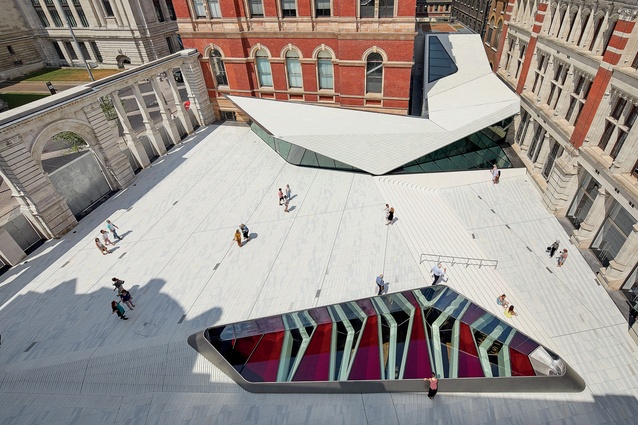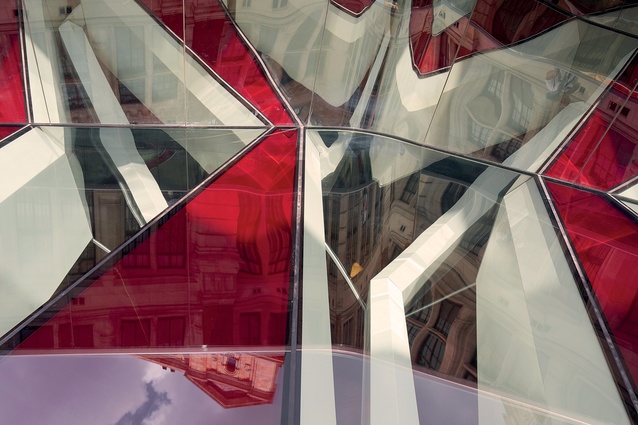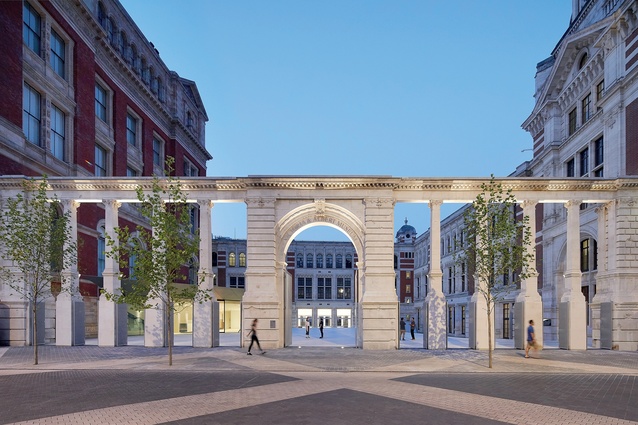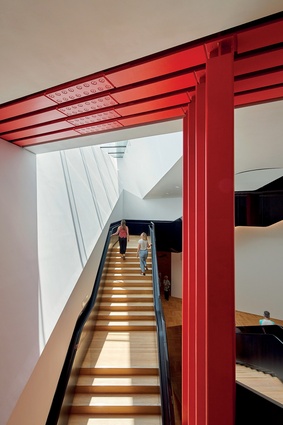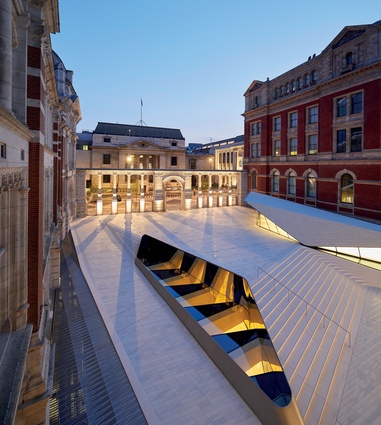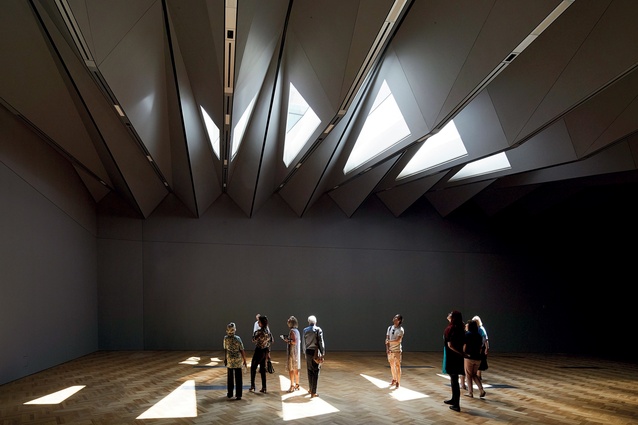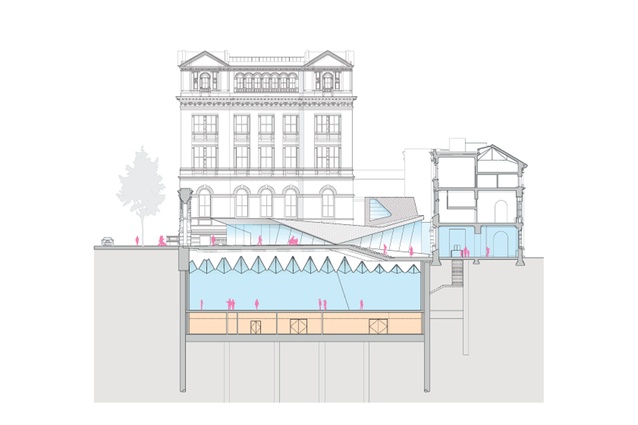Unifying art and science: Exhibition Road Quarter
Colin Martin visited Amanda Levete’s new Exhibition Road Quarter project, the Victoria & Albert Museum’s largest architectural intervention in over a century.
“It’s hard to imagine another institution that would have been so committed to such an audacious project and the daring of the construction process demanded by our design,” said Stirling Prize-winning architect Amanda Levete of the Exhibition Road Quarter project at the Victoria & Albert Museum, and the roles of her practice AL_A and Arup’s in realising it.
The museum’s largest architectural intervention in more than a century, the Quarter creates 6,400m² of new space from 2,200m² of underused space, accessed via a new entrance on its western façade. Linking the museum with its institutional neighbours across the road, the Natural History and Science museums, reinvigorates the Victorian vision of an intellectual quarter unifying art and science.
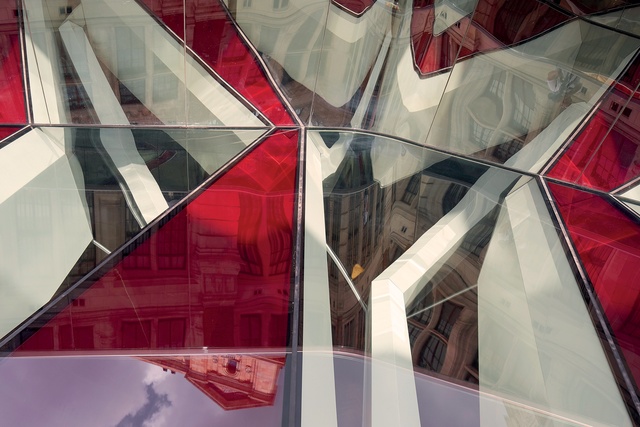
Daniel Libeskind’s 1996 design for a new V&A building was approved, but it failed to attract funding and was shelved in 2004. The 2011 design by AL_A is the antithesis of his spiralling ‘ivory tower’. Recognising the need for 21st-century museums to engage with contemporary life, Levete interpreted the brief as an urban project as well as a cultural one.
Hidden from Exhibition Road and public view, behind a 1909 masonry screen designed by an earlier architect, Aston Webb, boiler houses blocked views of surrounding museum buildings. Reinstating Webb’s original intention of an open Exhibition Road frontage, AL_A created the screen as an open colonnade, creating an informal 21st-century entrance as an alternative to the historic Cromwell Road entry.
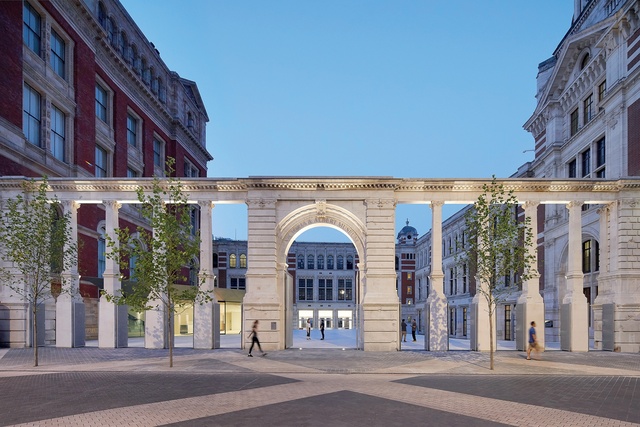
Beyond the altered screen, the new Sackler Courtyard functions as an extended, porous threshold between city and museum. It provides a gathering place which people can appropriate, to relax, eat and drink, or admire the newly revealed historic façades, notably the Henry Cole Wing’s sgraffito decoration.
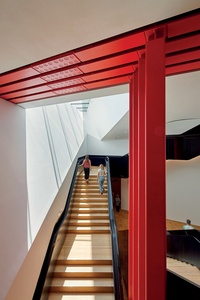
Referencing the museum’s historic ceramic decorative schemes, by William Morris and others, and its extensive ceramics collection, 15,300 handmade porcelain tiles were commissioned for paving the courtyard and tiling the café roof.
“It was vital for us that the Quarter be perceived as part of the V&A, never as an extension or an annexe,” says Levete. The entrance and stairs to the Sainsbury Gallery, a new 1,100m² column-free space for temporary exhibitions, were therefore positioned in the new Blavatnik Hall within the existing Western Range buildings, rather than in the new courtyard.
One staircase descends 18m to the new gallery and another ascends from it, adding a theatrical sense of ‘seeing a show’. Beneath the gallery, a 1,500m² space provides a new museum ‘engine room’ for handling and conserving art objects, and preparing exhibitions.
Arup provided engineering expertise for the project’s challenging structural works, using novel predictive technology to dig or pile 50m deep within a metre of Grade 1-listed buildings. The expression of the new gallery’s ceiling derives from its structural function of spanning 38m, uninterrupted. Despite being underneath the courtyard, it soars between 6.5 and 10.5m above visitors.
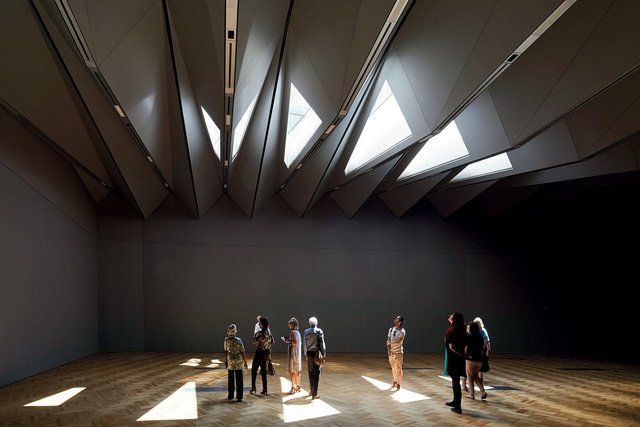
The inherent paradox of the Quarter is that this vast new gallery is hidden from the public. AL_A resolved this paradox via their concept of ‘making visible the invisible’, a new spin on ‘form follows function’. The courtyard pattern derives from the ‘pleated’ geometry of the ceiling beneath. A courtyard oculus, conceived as a museum vitrine, permits views into the void below and transmits fluctuations in daylight into the gallery.
“I trust that the Museum will remain for ages a Monument of discerning Liberality and a Source of Refinement and Progress,” remarked Queen Victoria on laying the Aston Webb Building foundation stone in 1899. Levete, made a CBE for services to architecture in the 2017 Queen’s Birthday honours list, has honoured this sentiment for the 21st century.

